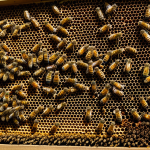Understanding Ear Infections in Folded-Ear Cats
Folded-ear cats, such as the beloved Scottish Fold, possess a unique ear anatomy that makes them particularly vulnerable to ear infections. Their distinctive ear structure— a genetic trait that results in a cartilage defect—leads to tightly folded ears. This adorable feature, while charming, restricts airflow and creates a warm, moist environment, ideal for yeast and bacteria. Consequently, maintaining cat health in folded-ear breeds requires special attention to their auditory well-being.
Common symptoms of ear infections in folded-ear cats include frequent head shaking, scratching at the ears, and obvious discomfort. Your feline may also appear off-balance, a signal that their inner ear might be affected. Early detection of these symptoms is crucial for timely intervention to ensure enduring feline health.
Also to read : Crafting the Perfect Diet for Your Hyperthyroid Cat: Top Tips for Weight Control and Energy Enhancement
To safeguard against feline illness, cat owners must stay vigilant and conduct regular ear inspections. Observing any unusual redness, discharge, or foul odor should prompt consultation with a veterinarian. With the unique challenges that ear anatomy poses, understanding these intricacies is essential for managing ear infections in folded-ear cats, ensuring they remain happy and healthy.
Importance of Regular Ear Cleaning
Maintaining feline hygiene is crucial, especially for folded-ear cats who are prone to ear infections. Regular ear cleaning can prevent the buildup of debris and wax that may lead to infections. How often should you clean your cat’s ears? Experts recommend weekly cleaning, but pay close attention to your cat’s health and behaviours, adjusting to more frequent cleanings if necessary.
Also to read : Crafting Fun and Efficient Indoor Exercise Plans for Your Feline Friend
Ensuring safe cleaning methods is important to protect your pet. Use a veterinarian-approved ear cleaning solution and cotton balls or gauze. Avoid inserting anything deep into the cat’s ear canal, as this could cause damage. If you’re unsure about the process, consult your vet for ear care tips that suit your cat’s specific needs.
So, how do you know when your cat’s ears need immediate cleaning? Be vigilant for signs like excessive scratching, head shaking, or visible dirt. Unusual smells or discharge can also be indicators. When noticed, these symptoms should prompt an immediate check and possibly cleaning.
Proactive ear cleaning reinforces feline hygiene and aids in early detection of issues, helping maintain overall cat health. Regular attention ensures your feline remains comfortable and less susceptible to prolonged discomfort.
Recognizing Early Signs of Ear Infections
Identifying infection symptoms early is crucial in ensuring prompt feline care, preventing further complications in your cat’s health.
Behavioral Changes
Folded-ear cats may exhibit noticeable behavioral changes when experiencing ear infections. Cats often display signs of discomfort or irritation, such as increased head shaking or scratching. These behaviors indicate a potential issue within the ear canal. Additionally, pay attention to changes in grooming habits. Cats might neglect grooming affected areas, leading to matted fur. A decrease in activity level or reluctance to engage in playful pursuits could also suggest discomfort caused by an infection.
Physical Symptoms
Physical indicators of ear infections include visible symptoms like discharge or redness. You might notice an unpleasant odor emanating from the ears, a telltale sign of an underlying issue. Swelling or inflammation around the ear area should also prompt immediate attention. These symptoms collectively signal the need for professional evaluation.
The Role of Routine Check-ups
Incorporating regular veterinary examinations into your cat’s care routine significantly aids early detection of ear disorders. Work closely with your vet to monitor potential issues and engage in discussions about ear health. Emphasizing routine check-ups can safeguard against severe feline illnesses, maintaining enduring ear protection and overall wellness.
Proactive Care and Preventative Measures
Proactive care plays a vital role in maintaining the overall well-being of folded-ear cats, particularly in safeguarding against ear infections. Implementing preventative care measures not only supports feline health but also ensures long-term ear protection.
A balanced diet that supports feline health can contribute significantly to preventing infections. Nutrients like omega-3 and omega-6 fatty acids, combined with a rich mineral profile, bolster the immune system, reducing the likelihood of infections. Therefore, selecting high-quality food is essential.
Environmental factors also contribute to infection risks in folded-ear cats. Dust and allergens can settle in the ears, leading to irritation. Keeping living spaces clean minimizes these risks, promoting healthier ears. Consider adjusting the cat’s environment to reduce exposure to potential irritants.
Seasonal considerations impact ear hygiene, too. During humid months, the risk of infection can escalate, as moisture can become trapped in folded ears. Implement additional cleaning measures during these periods. Meanwhile, cold months may lead to less ventilation, also necessitating preventive attention.
By addressing these proactive and preventative measures, cat owners can effectively manage ear hygiene and provide robust ear protection for their folded-ear feline companions.
Veterinary Intervention and Treatment Options
For folded-ear cats experiencing ear infections, timely veterinary care is essential. If your cat shows signs of infection, such as persistent scratching or a foul odor, seek professional advice immediately. Professional treatment is crucial to prevent complications.
Veterinary care often involves tailored treatments depending on the infection’s severity. Common ear infection treatments include medicated ear drops, specifically formulated to eliminate yeast or bacteria. In certain cases, systemic antibiotics might be recommended. It’s important to follow the vet’s instructions carefully to ensure effective treatment.
Knowing when to consult a vet is key. It’s advisable to seek veterinary assistance when symptoms persist beyond a few days, or if your cat exhibits extreme discomfort. Immediate action can prevent the problem from worsening.
Follow-up care is integral to successful recovery. Regular monitoring of your cat’s ears after treatment helps ensure the infection has cleared and restores optimal feline health. Stay in touch with your veterinarian for ongoing ear protection tips. Thorough follow-up and monitoring foster long-term wellbeing, maintaining your pet’s health and happiness.
Anecdotal Success Stories and Expert Insights
Understanding feline health stories can be both informative and reassuring for cat owners. Recent encounters shared by pet owners illuminate ways others have handled ear issues in folded-ear cats. One cat owner described how vigilant monitoring and regular ear cleaning helped avert serious infections, underlining the importance of routine care. She emphasised using soft gauze and a veterinarian-recommended solution, stating that consistent practices have maintained her feline’s ear health without recurring problems.
Expert advice from veterinarians stresses proactive care in preventing infections. Renowned vet Dr. Jane recommends frequent inspection of the cat’s ears, especially in high-risk breeds, as crucial. Dr. Jane advises that early detection remains key, encouraging owners to pay attention to signs like head shaking or uncommon ear wax, which can be early indicators.
Additionally, veterinarians share crucial cat owner experiences, highlighting the role of balanced diets strengthened with omega-3 for boosting immune responses. Another expert tip involves preparing for seasonal changes, suggesting extra vigilance during more humid periods when moisture-related ear concerns tend to escalate.
The collective insights reveal not just compassionate stories but practical strategies and valuable expert insights for maintaining the well-being of folded-ear felines.









